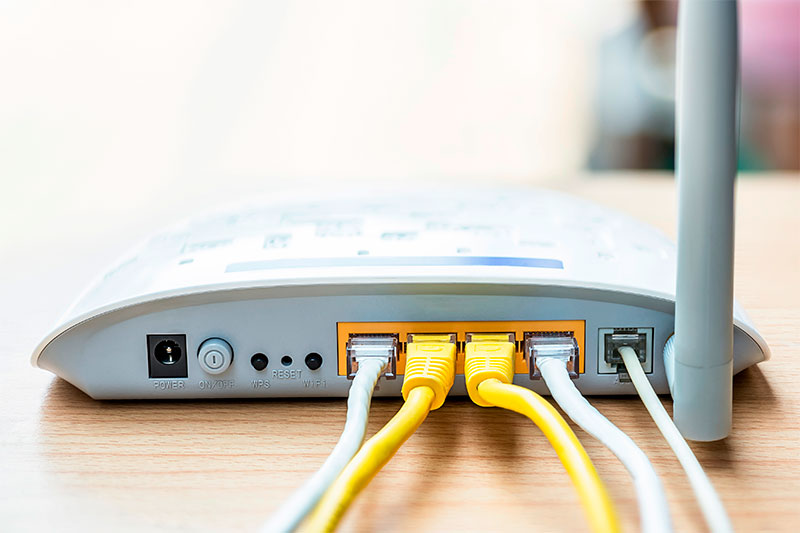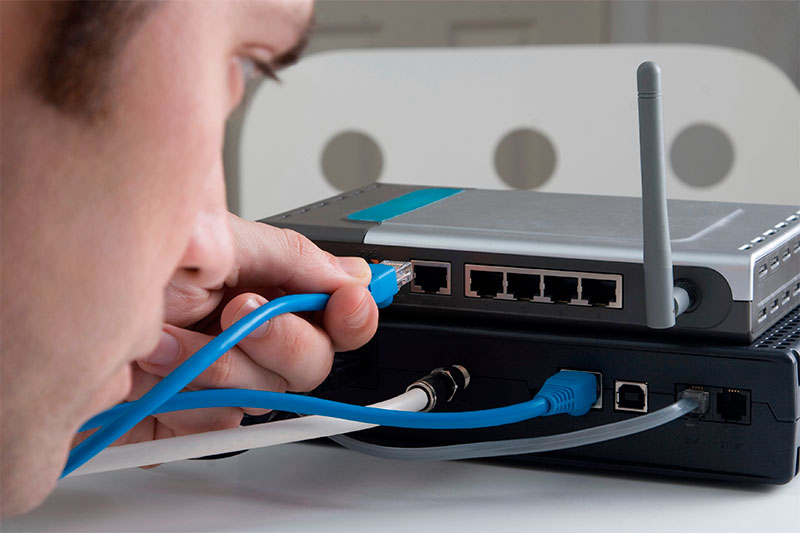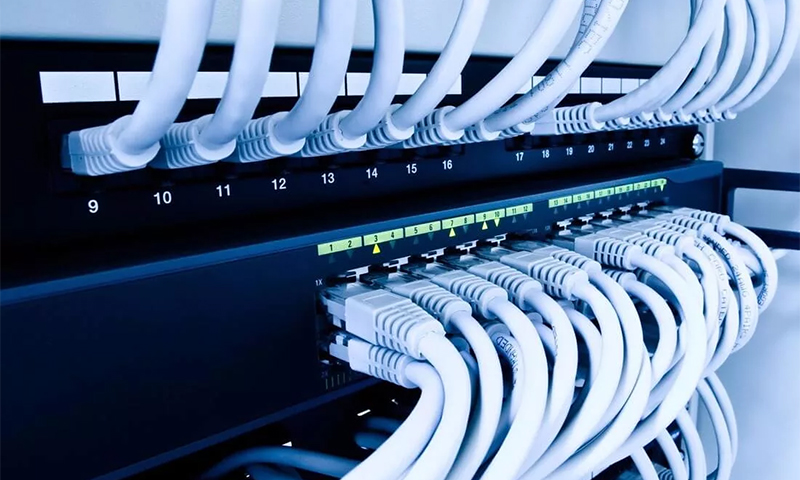Not too trusting the assurances of sellers and advertising, it is better to understand the types of Wi-Fi routers themselves. There are no special difficulties here, and the reliability and functionality of modern devices allows you to quickly understand the basic parameters of choice and technical characteristics. To choose the right router (router), you only need to understand 2-3 standards of wireless networks, learn your internet connection method (network cable, ADSL, 3 / 4G) and think about the need for additional functions (like USB ports for a printer and a USB flash drive) ). The article tells about all the intricacies and even how not to get caught on tricky advertising techniques of manufacturers.

Content:
The best manufacturers of Wi-Fi routers - which company to choose
The following companies are deservedly considered "flagships":
1. TP-Link
2. ASUS
3. Zyxel
Models of these brands are reliable, fast and design-cute. The interface is qualitatively translated into Russian, and the manufacturer has long supported its products with updates.
Somewhat inferior to them in price, but the manufacturers listed below are of the same quality:
4. D-Link
5. Tenda
6. Xiaomi
These models do not always have a fully translated interface, but they can be recommended for everyday use with a perspective of several years of use.
- See also: rating of the best Wi-Fi routers
The principle of the Wi-Fi router

A router is a device designed to operate computer networks. In practice, the router connects computers, laptops, smartphones and other gadgets. As a rule, the Internet channel is connected to the router, and then this device distributes the connection within the home / office network. The physical dimensions of the router are smaller than a small book.
In fact, the router (this is a complete synonym for the word "router") is a real mini-computer: with its processor, memory, network connectors, "OS" - up to USB ports.
Routers are wired and wireless. The first are less common in the home segment: it is easier and more convenient to use the network without wires than to pull long network cables. Most often, a household router has the ability to simultaneously operate both a wireless network segment and a wired connection of 1-4 PCs.
Devices in the router:
1. 1-2 USB ports for connecting a USB flash drive, external HDD, network printer, sometimes a 3G / 4G modem. USB ports are not present on all routers.
2. Additional antennas: provide higher speed intranet connection. The optimal number of antennas for home use - 2-4.
3. LAN ports: from 1 to 4. Needed for wired connection to PCs and laptops. Present in most models.
Router selection options

Choosing a Wi-Fi router by the type of connection to the provider
Convenient models of routers with a communication module, with an Internet provider: the so-called "2 in 1" devices. This type of router allows you to connect a telephone ADSL cable to it (or insert a 3G / 4G SIM card) - and then "distributes" Internet devices to the local network. Additional equipment (modems) is not required. The overwhelming majority of household routers are able to receive and transmit signal from providers via an Ethernet connection (LAN, "fiber-optic networks").
If your Internet connection is based on ADSL technology, it is advisable to purchase routers with an appropriate modem.
If the connection is made via mobile networks (3 / 4G-modems), then you should think about a device with a SIM card slot (or with a USB port that allows you to connect a modem).
When the router is used both for home and country dacha (where the only option for accessing the Internet is mobile networks), the router will be rescued with two modems at once: cellular and ADSL.
Standards and generations of Wi-Fi: g, n, ac and others
Models of routers with the outdated standard Wi-Fi b and g are no longer on sale. Gadgets of this generation are still quite common, but they are quite efficient in more modern wireless networks: 802.11n and 802.11ac. By the way, the mysterious numeric combination "802.11" means any Wi-Fi network: these are technical synonyms.
Generation 802.11n - the most common and inexpensive routers with a theoretical network bandwidth of up to 450 Mbps. More recent models have the support of high-speed standard Wi-Fi ac ("Ey-si"), with an even wider channel. These are somewhat more expensive routers. In addition, gadgets that also support the ac standard are not as common as ubiquitous smartphones, laptops and tablets of the 802.11n generation.
However, whenever possible, we recommend acquiring routers that support the most modern and fast ac standard. First, routers usually buy for 4-6 years, and during this time high-speed ac devices will appear in your home or office network environment. Secondly, the difference in price is not so significant.
Devices with different generations of Wi-Fi are compatible with each other. An old laptop with g-connection support will work in conjunction with an ultra-modern ac-router. But the g-generation will not allow it to transfer data faster than this standard allows: up to 54 Mbps, and in practice even less. The same speed will be in the networks of generation n, and in the "gigabit" wireless networks. The flagship smartphone with Wi-Fi generation module ac will connect to both the ancient g-router and the modern n-generation of routers: but in this case its network speed will be limited, respectively, by g- and n-standards.
It is undesirable (and even harmful) to “hunt” for enticing marketing promises about gigabit wireless network speeds. Such standards really exist: Wi-Gig (aka - 801.11ad) theoretically supports speeds of up to 7 gigabits per second. In practice, this is achievable only at a distance of no more than 3-4 meters, with powerful antennas and always in direct visibility without the slightest obstacles or radio interference. Such standards, in addition to “civil” g / n / ac, are applied only in narrow, specialized areas - but not in the mass segment.
Results on the choice of the router according to its standard Wi-Fi:
- n: less expensive, less promising;
- ac: more quickly, the cost is slightly more expensive, "technological strength margin" - for many years to come;
- g: a hopelessly outdated standard that is rarely available
- high-speed ad, gigabit Wi-Fi, etc. not suitable for everyday use: at best, their speed will be at the level of more common and affordable models.
What parameters should NOT be taken into account when choosing a Wi-Fi router
Many of the characteristics of the routers that marketers are so proud of are important only for highly advanced PC users. For those who know what additional functions are needed for, the possibility of flashing, etc. Home or office consumers should not take into account the following parameters:
1. Distance
The value on which the wireless network is supposed to work. Manufacturers assure about 50 (or even 100 meters) - but this is an advertising ploy and no more. In the conditions of multi-storey buildings with numerous walls, furniture and external radio interference, you can confidently count on a radius of action of no more than 20 meters with no more than 2-3 partitions or walls.
2. Antenna power (measured in dbi units)
It is believed that the more powerful the router, the greater the distance it can be to the devices. This is not so: no matter how overly powerful the router is, Wi-Fi communication modules for smartphones, laptops and other gadgets are always less powerful.They are able to "catch" the signal of a remote router - but the power of their own device will not allow them to transmit their own signal. The result - a broken connection or the inability to connect. If you want to increase the range of the wireless network, you should buy a second router and set it to repeater mode ("signal repeater"). Communication will be stable and fast with a higher radius of action, and this will not require serious investments.
3. Claimed speeds
Even with the direct line of sight between the router and network devices, in the absence of interference, the actual connection speed will be several times lower than stated.
Which Wi-Fi router to choose

1. Buyer 1: a home user who wants to create a wireless network and connect it to the Internet for collaboration 1-3 PCs and laptops + 3-4 mobile devices - without a printer or increased attachment to torrents.
In this case, it is better to purchase a less expensive router with support for n. As for the connection, it all depends on the type of connection to the provider. For ADSL-lines (telephone wire), you should pay attention to the presence of an ADSL-modem in the router. If you use cellular communication as an Internet source, you need a slightly more expensive (within + 10-15 dollars) router with the ability to connect a USB modem or SIM card. The most common case - a LAN connection to the provider (via a network cable / fiber) does not require a modem: such a router is ready for operation.
We advise you to pay attention to the least expensive devices from the TP-Link line, ASUS, D-Link, the presence of a Russian-language interface is required. The setting is best done independently. As a rule, it is required once every six months.
2. Buyer 2: selects a model with an eye to the future, wanting to thoroughly understand the intricacies of network settings.
As for the choice of standard Wi-Fi, then it is definitely ac. In terms of connectivity, follow the same principles as in the example above.
But the choice of the model should be stopped on cheap devices from the manufacturers of the "second echelon", especially without translating the interface into Russian. This is sure to force to carefully examine in practice all the possibilities of modern network technologies. Remember that similar models require regular reconfiguration. This is really an interesting occupation - but only for those who wish to understand the technique themselves. When experience and knowledge appear, you should buy a new, more expensive and functional router. By this time, such a user will know exactly what he needs.
3. Buyer 3: An office router is required for a large number of connections, with high requirements for reliability and stability for possible network expansion.
It is better to choose expensive models of the best manufacturers, without regard to the attractive offers from Xiaomi, Tenda and other companies that do not always ensure the stability of the business class. At the same time, the most expensive and multifunctional models are designed for IT-enthusiasts, so it is quite possible for a business buyer to meet about 80-120 dollars.
How much are the routers

1. Basic models are not the most famous, but enough quality manufacturers: 25-40 dollars. You can count on 1-2 antennas and a class n wireless standard.
2. Simple models of access points with additional features + 10-12 dollars to the cost of the basic device for each of the additional functions like 1 USB port, ADSL modem or additional antenna.
3. More expensive models from famous manufacturers: 60-100 dollars for fairly simple devices, and 100-200 dollars for devices with advanced features for advanced users.
It will be interesting to friends too







